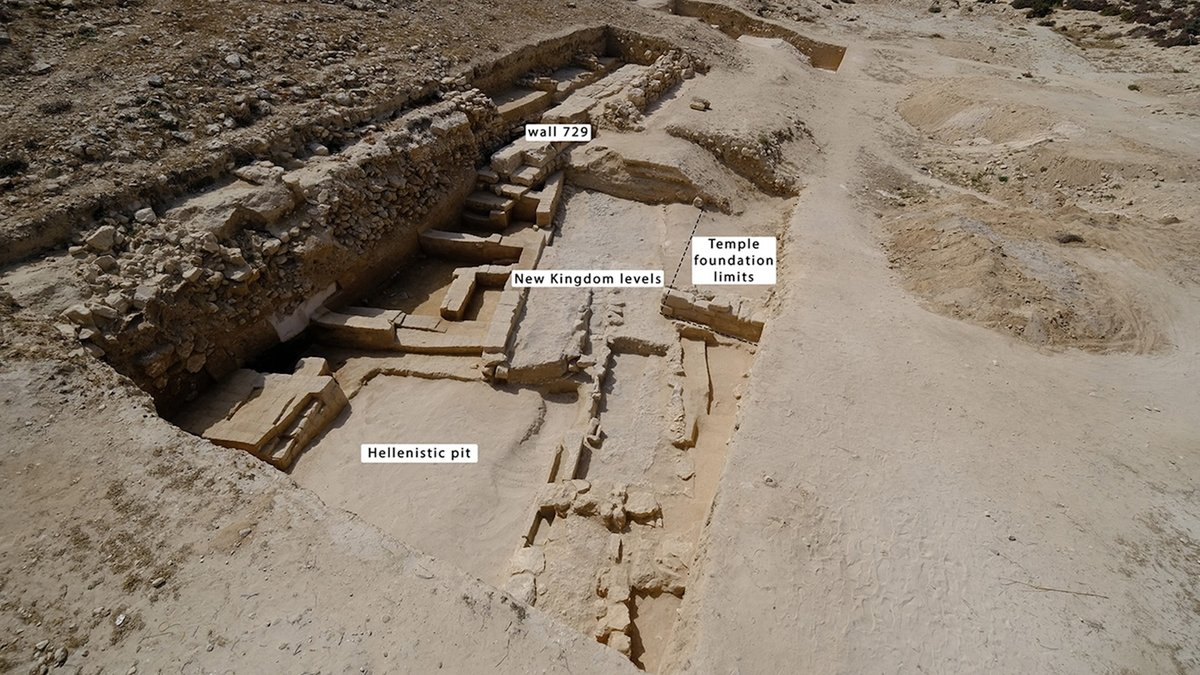3,400-Year-Old Egyptian Town Linked to Tutankhamun Unearthed Near Alexandria

A team of French archaeologists has uncovered the remains of a 3,400-year-old town near modern-day Alexandria, Egypt, revealing a bustling settlement from the era of King Tutankhamun's family. The site, known as Kom el-Nugus, lies 43 kilometers west of Alexandria on a rocky ledge between the Mediterranean Sea and Lake Mariout, and is believed to date back to the 18th Dynasty, one of ancient Egypt’s most influential periods.
The city was likely established during the reign of Akhenaten, Tutankhamun's father, and later expanded by Ramses II. Previously, archaeologists thought this region remained uninhabited until the Greeks arrived centuries later; the new findings dramatically revise the timeline of Egypt’s western frontier. The excavated remains include well-organized streets and mudbrick structures, indicating a planned and relatively large urban center. An amphora stamped with the name of Meritaten—daughter of Akhenaten and Nefertiti—affirms the settlement's connection to the royal family.
This discovery is the first evidence of New Kingdom occupation in the Nile Delta north of Lake Mariout, and it promises to reshape understanding of the region’s history. Artifacts and street layouts suggest advanced urban planning, including systems for managing surface water and protecting buildings from erosion. Excavations are ongoing, and researchers anticipate that further study will provide new insights into daily life, trade, and administration during a pivotal era of Egyptian civilization.
Recent Culture Articles
Slovenia to Acquire Patria AMV XP 8x8 Vehicles from Finland
Slovenia takes a major step towards modernizing its military with the planned acquisition of advanced Finnish-made armoured vehicles.
Karla Sofía Gascón Addresses Racism Allegations: I Am Less Racist Than Gandhi
Karla Sofía Gascón sparks controversy by claiming she is less racist than Gandhi, responding to backlash over resurfaced offensive tweets.
Sinners Delivers a Box Office Milestone and a Cinematic Masterpiece in 2025
Ryan Coogler’s Sinners is dominating 2025 with box office success, critical acclaim, and an unforgettable fusion of period drama, horror, …
Portrait of Palestinian Boy Wins Top Photo; AI Album Debuts; Ancient Town Linked to Tutankhamun Found in Egypt
A Palestinian boy’s portrait wins a top prize, Pedro Sandoval’s AI album makes Spotify history, and an ancient Egyptian town …
Spain Sets Record with World’s First Fully AI-Generated Music Album
Spain has achieved a historic milestone as Pedro Sandoval releases the first Spotify-certified music albums created entirely with artificial intelligence.

Slovenia to Acquire Patria AMV XP 8x8 Vehicles from Finland
Slovenia takes a major step towards modernizing its military with the planned acquisition of advanced …

Karla Sofía Gascón Addresses Racism Allegations: I Am Less Racist Than Gandhi
Karla Sofía Gascón sparks controversy by claiming she is less racist than Gandhi, responding to …

Sinners Delivers a Box Office Milestone and a Cinematic Masterpiece in 2025
Ryan Coogler’s Sinners is dominating 2025 with box office success, critical acclaim, and an unforgettable …

Portrait of Palestinian Boy Wins Top Photo; AI Album Debuts; Ancient Town Linked to Tutankhamun Found in Egypt
A Palestinian boy’s portrait wins a top prize, Pedro Sandoval’s AI album makes Spotify history, …




